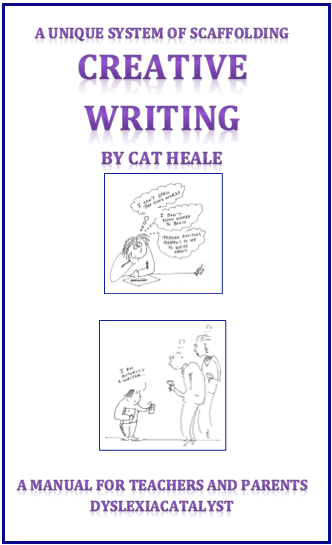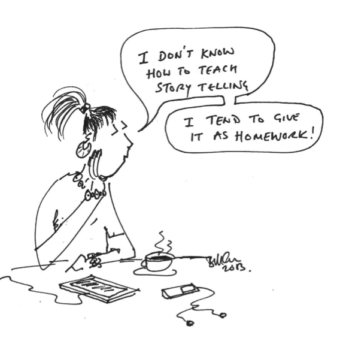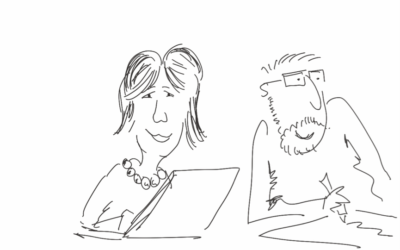

Creative Writing
Many children, especially those with EAL or Specific Learning Difficulties have problems in the area of creative writing. My aim is to show children (or teachers) how a structured, sequential and cumulative model can work successfully to support all children. Self esteem is guaranteed!
The manual for teachers and parents will be coming soon. It will explain the whole theory behind the scaffold, how to teach the skills required and will provide ten fully-supported lesson plans.
- Introduction
I hated story writing at school. I didn’t know where to begin, I felt I had no ideas, good words or how to create a plot and my best friend, who is now a successful journalist, was never stuck for words, which only made me feel more inadequate!
Once I became a teacher I developed strategies to scaffold and support nearly all areas of learning but particularly creative writing, so that there was no failure within this guided practice. It then followed that once the child gained confidence, they could ‘lift off’ in to independent writing.
I have taught for many years in London, Tokyo, California and Hong Kong, in many different educational systems. Throughout, there has been one constant theme and that is that many children (especially children with SpLD, such as Dyslexia and English as an Additional Language), their teachers and their parents all have a certain dread when it comes to Creative Writing. In contrast, I have found that with a sufficient amount of scaffolding and support and never giving creative writing as homework, all these worries go away, allowing the children to revel in their creativity and to gain an enormous amount of self-esteem. Success certainly breeds success.
- The Scaffold (framework):
The scaffold can be looked at in a very structured way, it can be presented as a mind map or as a ‘wall’, each support skill being a brick. If one brick is missing, then there is every chance the wall will collapse. The scaffold consists of these elements;
- Skills
- Stimuli
- Vocabulary
- Scaffolding
- ICT
- Writing
- Marking
- Presentation
- Reinforcement
- Self-esteem
- Skills
These can be any skills that the teacher wants or is required to teach. I choose the skills that are most relevant to the goal of encouraging fluent writers. A session taught separately may consist of the explicit teaching and practising of how to write a conversation, synonyms of over-used words such as said or walk, or similes. Most children learn these skills but unless they are able to use them back in their writing, they are of little value. Once the skills are learnt, there should be great emphasis put on them in their creative writing.
- Stimuli
To begin with, a passage (a page or two) is read from a fictional book, steeped in strong and vivid vocabulary. In this way the children have a strong mental image of a scene. The best idea is to follow this up with acting out the story, preferably with the aid of a few key props. Some children need to visualise and participate in the story, to fully understand the story and vocabulary.
The complexity of the story read will be differentiated depending on the interest (rather than the reading) level of the children. For example; the BFG might be suitable for a class of young readers, Magician’s Nephew for a class of fluent readers and Northern Lights for a class of advanced readers. Once introduced to these books, it is not surprising how often a child will then want to read the rest of the story for themselves. Music, poems and tapes are something that are introduced once the children become much more confident.
The idea is not to re-write the passage using the same characters but to be stimulated to use some of the ideas presented, to make their own story setting and characters.
- Vocabulary
Vocabulary phrases and words are all important for creative, creative writing. Children not exposed to interesting phrases, who have English as an additional language or are frightened to use words they can’t spell, find the lists of phrases chosen from the passages read (‘long, pale, wrinkly face’ from the BFG, ‘curiosity got the better of her’ from the Magician’s Nephew or ‘the heavily sculpted facade’ from Northern Lights) the most incredible support. In order to benefit the most from these sets of words, which they remember by thinking of the passage, the children should be encouraged to use words from past books so that the effect is one of a cumulative and sequential build up. A love of synonyms (especially for the words, walk, said, nice and spooky!) and a thesaurus, as well as a spell checker for proof reading, are essential. Once the synonyms are discussed, children find it highly amusing that there should be ‘forbidden’ words such as ‘said’, which are not allowed back in to their writing.
- Scaffolding (Framework)
The planning and structural aspects of the creative writing process, is critical. It is also the stumbling block for many children as they say the plan gets too complicated and they can’t think of how to a) start b) develop the plot c) think of good words and d) decide how to finish.
- Differentiation
The scaffold can work for many different levels: Initially, with young children one can start by just having one set of words that the children place in a pre-written story (prepositions for ‘We’re going on a Bear Hunt’ works well).
Next one would work on reading a passage, using the vocabulary, acting it out and building up individual paragraphs of setting or encounter. When the children are confident with the individual paragraphs, it can be good to write the ‘lead in’ as a class and then the children are encouraged to finish the story, stopping before each paragraph starts to establish what exactly is required of the next paragraph. Once discussed then one needs to ask for silence while they write, to allow everyone to think. If any of the children look puzzled then the process has gone too fast and they need the scaffold of the previous step cemented. In my experience, the rate at which the children ‘lift off’ this guided practice is entirely dependent on how ‘secure’ they feel in the process.
When the children have practised all the constituent parts of writing a story then they are ready to write the whole four paragraphs. There is one story plan that can be adapted for all stories. It is so simple and diverts the children away from what I call ‘and then’ stories. It encourages them to think and write in descriptive terms and, if it is followed carefully, the story ‘takes care of itself’. The reduction in stress is enormous and it is constantly amazing how one story plan, using just one stimulus, can produce such varying stories. As I say to the children, “it may be the same plan and stimulus but you have the freedom to take your story anywhere in the world and into any time frame!”
- The Story Plan:
- The lead in.
Asking the questions, who, where and why? Who is the main character in the story, where is that person and why are they there? A short paragraph, taking no more than five minutes to write.
- Description of the setting.
The children should concentrate on the description of the setting, using the vocabulary phrases, past and present and their own imagination. It is always good to think about their senses, what they can hear, smell or touch as well as what they can see. To avoid it being a straight list, encourage the children to combine ideas, for example, ‘chinks of light shone on to the lichen-covered, damp rocks’. This paragraph should take about ten minutes to write, again in silence, once all questions have been asked and answered.
- Description of the encounter.
This is when the main character(s) in the story encounter something or someone. The emphasis is on the description again. Once children have learnt the rules of speech, this is the perfect paragraph to put it in, a short exchange rather than a dialogue, as it is all too easy to forget the description. Again ten minutes is the appropriate amount of time to write.
- Lead out.
In which the story is concluded. The characters have now met, the main question to ask is ‘what happens?’ In a short story this should be short, pithy and might be a ‘cliff hanger’. The sentence ‘ I woke up and it was all a dream’ is not an ending to be over-used! Five minutes is all it should take and ideally it should link to the ‘lead in’ by making some reference to the question of why the character was in that situation to begin with. For example if the character was in the desert looking for scorpions, maybe in the lead out, mention could be made of ‘a curved, crusty tail poised for attack!’
- Extension
Once children have become fully confident and competent with the scaffold, it is very easy to extend their work by allowing more time for each paragraph, two or three paragraphs for each part of the story and using more and more sophisticated texts (and therefore vocabulary) as the stimulus. Outstanding work can be expected and achieved right up into secondary education, with this scaffold as the root model.
- ICT Software
This is possibly the biggest growth area in terms of outstanding help for children with difficulties and/or English as an Additional Language.
There are many pieces of software that support and scaffold the process of Creative Writing, but not all of them need to be used all the time, but it is useful to be able to draw on them. Some of the key pieces of software to consider are:
- Text HELP. Read and Write Standard/Gold
Text-to-Speech Feedback, with a floating toolbar to create a supportive environment, providing all the speech and spelling tools needed.
- Dragon Speaking Naturally
You talk, it types!
- Inspiration V8
Visual mapping software that organises, plans and presents ideas.
- Wordbar
Always ready, on-screen vocabulary toolbox.
- Franklin Spell checker
Invaluable aid for proof-reading.
If you are interested a good company dealing in all this software, based in England, is: www.iansyst.com
- Writing
Once the skills have been taught, the passage from the stimulus book acted out and discussed, the vocabulary words and phrases gleaned from the passage, the story planned, the children are ready to begin writing.
There are two points to note, one is that they should write skipping lines. The other is that it should be completed in complete silence. No questions should be asked as this disturbs everyone around. Keeping quiet is often more difficult for the teacher than the children!
If a child is unable, for whatever reason, to write, then one of the above pieces of software can be employed and in extreme cases the story can be ‘scribed’.
Creative Writing should never be given as homework, it is too stressful for all concerned and the parents can’t be expected to know how to scaffold or what is expected of them! Let alone the fact that you, as the teacher, have no idea who has written the story.
- Over-learning and reinforcement
Once the piece of writing is completed, the children should be given time to proof read it, preferably with the aid of a spell checker. It can then be handed to another child and they can proof read it, in another colour and sign it.
Next the children should highlight any words or phrases in the passage that are skills that they have learnt, such as similes, any vocabulary they have used from the vocabulary sheets, from the passage they have based their story on, or any vocabulary they have learnt in this manner. This highlighting encourages and fosters ‘over-learning’. Children love to highlight and as they become more aware of their own learning, more and more of the page is highlighted. Positive marking, of a tick, over the highlighted word, is just a reinforcement of the positive aspects of their writing.
- Marking
A simple dot should be put under the incorrectly spelt word, punctuation or grammar. It is then up to the child to work out the problem and re-write it in the skipped line above the mistake (again using their spell-checkers) Whether marks have to be given depends on the school. My preference, is that it is better only to put a comment but when a mark is required, it is good to break the creative aspect from the grammar, spelling and punctuation.
- Presentation
Time should be made in the week for the children to read out their stories, with the other children providing constructive comments. For the reader to learn to read out loud and the positive benefits of having an audience, is an incredible boost for any child.
If possible it is best to put all the children’s creative writing work in a file, with coloured dividers for each different story. In this way they can access previous stories and vocabulary sheets easily and quickly.
Homework should be used for word processing their work or in making a fine illustration to go with their story. This can then be brought back in to school and displayed on a board, in a magazine or back in their files.
- Reinforcement
The great strength of this model is that reinforcement is provided all the way through the process in a sequential, cumulative and multi-sensory manner.
The final reinforcement is for the children to take pride in reading their stories out loud with expression. The other children should comment constructively and positively. This provides immediate feedback, pride and encouragement.
- Self-esteem
At the end of the whole process of the ‘scaffolded’ piece of Creative Writing, most children will feel as if they are a ‘writer’. An added bonus is that they frequently want to read the book from which you have chosen the passage to inspire them, and they become more critical of their own reading and whether it has ‘good vocabulary’.
Finally, if the whole model has been ‘scaffolded’ correctly, then every child experiences success. Every child, whether they have Specific Learning Difficulties, speak English as an Additional Language or are already confident readers and writers, can only improve and this is wonderful for their self-esteem.
Scaffolding Creative Writing Animation (coming soon)
 Conceived and written by Cat Heale
Conceived and written by Cat Heale
Cartoons created by Bill Crooks of Creative Mosaic